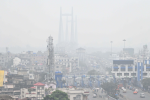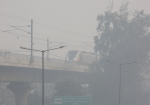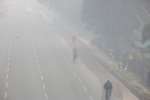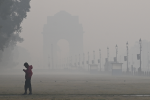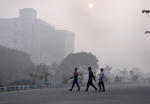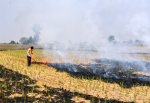
Ahmedabad: As Gujarat grapples with soaring temperatures, Ahmedabad recorded a high of 42°C (108°F) on Thursday, with a predicted forecast similar for the coming days.
Over the past few decades, Gujarat has witnessed a consistent increase in both minimum and maximum temperatures. Scientists warn that 2025 could be one of the hottest years on record if current trends continue.
The IMD’s ‘State-Level Climate Change Trends in India’ report indicates an annual rise of approximately 0.02°C in these temperature metrics. While this increment may seem marginal every year, its cumulative effect over time has led to more frequent and intense heatwaves.
The IMD predicts that the intense heat will persist throughout April and May, with maximum temperatures ranging between 41°C to 45°C (106°F to 113°F) in parts of Gujarat. A slight respite is expected with the onset of the monsoon season in June, although temperatures are still projected to remain above normal during this period.
Experts suggest that several factors contribute to this warming phenomenon. Rapid urbanisation and industrialisation have transformed cities like Ahmedabad and Surat into heat islands, where concrete structures and asphalt surfaces absorb and retain heat, elevating local temperatures.
Additionally, deforestation for agricultural expansion and urban development has diminished the natural cooling effects of vegetation, further exacerbating the heat. Gujarat’s geographical features also play a role. Its extensive coastline along the Arabian Sea means that rising sea temperatures can influence local climate conditions.
“Urbanisation in cities like Ahmedabad and Surat has replaced natural landscapes with heat-trapping concrete, asphalt, and steel. These materials retain heat well into the night, increasing not just daytime but also nighttime temperatures. It’s a classic case of the urban heat island effect,” said a climate scientist at the Gujarat Ecology Commission.
Further, Gujarat’s semi-arid geography makes it more vulnerable to temperature extremes. Unlike forest-rich regions, dry land heats up faster and offers minimal natural cooling. This makes rural populations and agricultural workers especially susceptible to heatstroke and dehydration.
In May 2010, Ahmedabad experienced an extreme heatwave, with temperatures soaring to unprecedented levels. Studies indicate that during this period, there was an estimated 43 per cent increase in all-cause mortality, translating to approximately 1,344 excess deaths compared to similar periods in 2009 and 2011.
More recently, in May 2024, Gujarat recorded 187 cases of heatstroke, with Ahmedabad accounting for 69 of these cases. Notably, 152 of these cases across the state, including 66 in Ahmedabad, were reported in the last ten days of May when average temperatures reached 44.6°C.
In the agricultural sector, increased heat stress adversely affects crop yields, threatening food security and the livelihoods of farmers.
Health-wise, the prevalence of heat-related illnesses has surged. For instance, during a heatwave in 2010, Ahmedabad recorded 76 heatstroke deaths in a single week.
Subsequent analyses revealed an excess of 800 deaths during that period, highlighting the severe impact of extreme heat on public health.
In response to the increasing heat, the Gujarat government has implemented several measures to mitigate the impact on its citizens.
The Gujarat State Disaster Management Authority (GSDMA) has developed action plans for high-risk cities, focusing on early warning systems and public awareness campaigns.
Furthermore, the government has advised residents to take precautions against heat-related illnesses, emphasising the importance of staying hydrated and avoiding direct sun exposure during peak hours. The health impacts of rising temperatures are profound.
Studies have shown a significant increase in heat-related illnesses and mortality during extreme heat events.
For instance, the 2010 heatwave in Ahmedabad was associated with a 41.3 per cent increase in all-cause mortality. To combat this, the Ahmedabad Municipal Corporation has launched heat wave preparation and warning systems aimed at protecting vulnerable populations.
Looking ahead, projections indicate that Gujarat’s mean temperature could rise by up to 5°C by the end of the 21st century.
IANS



